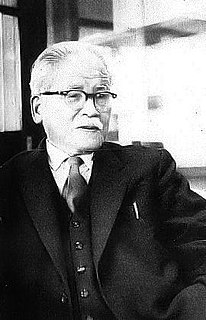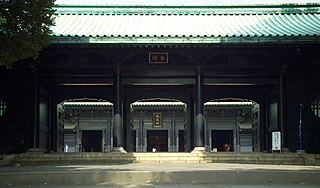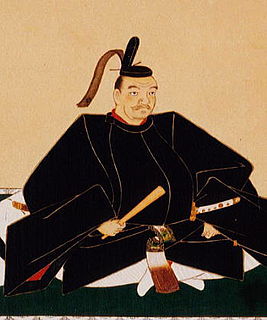 W
WYoshishige Abe was a philosopher, educator, and statesman in Shōwa period Japan. As Minister of Education in the immediate post-war era, he oversaw major reforms to the Japanese educational system.
 W
WNakae Chōmin was the pen-name of a journalist, political theorist and statesman in Meiji-period Japan. His real name was Nakae Tokusuke . His major contribution was the popularization of the egalitarian doctrines of the French philosopher Jean-Jacques Rousseau in Japan. As a result, Nakae is thought to have been a major force in the development of liberalism in early Japanese politics.
 W
WDōgen Zenji, also known as Dōgen Kigen (道元希玄), Eihei Dōgen (永平道元), Kōso Jōyō Daishi (高祖承陽大師), or Busshō Dentō Kokushi (仏性伝東国師), was a Japanese Buddhist priest, writer, poet, philosopher, and founder of the Sōtō school of Zen in Japan.
 W
WHakuin Ekaku was one of the most influential figures in Japanese Zen Buddhism. He is regarded as the reviver of the Rinzai school from a moribund period of stagnation, refocusing it on its traditionally rigorous training methods integrating meditation and koan practice.
 W
WTōrei Enji (東嶺円慈) was an eminent Japanese Zen Buddhist monk, teacher, author, painter and calligrapher. He was the chief disciple and Dharma heir of famed Japanese Rinzai master Hakuin Ekaku (1685-1786) and was a major figure in the revival of the Rinzai school in eighteenth century Japan. He is also known as the author of an influential text on Zen practice called "The Undying Lamp of Zen", which is his magnum opus and presents the comprehensive system of Rinzai Zen as it existed at the time of Hakuin.
 W
WInoue Enryō was a Japanese philosopher, Shin Buddhist priest and reformer, educator, and royalist. A key figure in the reception of Western philosophy, the emergence of modern Buddhism, and the permeation of the imperial ideology during the second half of the Meiji Era. He is the founder of Toyo University and the creator of Tetsugaku-dō Park 哲学堂公園 in Tokyo. Because he studied apparitions in order to debunk superstitions, he is sometimes called Professor Specter and the Spook Doctor .
 W
WMasanobu Fukuoka was a Japanese farmer and philosopher celebrated for his natural farming and re-vegetation of desertified lands. He was a proponent of no-till, herbicide and pesticide free cultivation methods from which he created a particular method of agriculture, commonly referred to as "natural farming" or "do-nothing farming".
 W
WKeian Genju was a Japanese Buddhist monk who studied classics under Ishō at Nanzen-ji.
 W
WHanawa Hokiichi was a Japanese blind kokugaku scholar of the Edo period.
 W
WHayashi Gahō , also known as Hayashi Shunsai|林 春斎|, was a Japanese Neo-Confucian philosopher and writer in the system of higher education maintained by the Tokugawa bakufu during the Edo period. He was a member of the Hayashi clan of Confucian scholars.
 W
WHayashi Hōkō , also known as Hayashi Nobutatsu, was a Japanese Neo-Confucian scholar, teacher and administrator in the system of higher education maintained by the Tokugawa bakufu during the Edo period. He was a member of the Hayashi clan of Confucian scholars.
 W
WDaisaku Ikeda is a Japanese Buddhist philosopher, educator, author, and nuclear disarmament advocate. He has served as the third president and then honorary president of the Soka Gakkai, the largest of Japan's new religious movements. Ikeda is the founding president of the Soka Gakkai International (SGI), the world's largest Buddhist lay organization, which declares approximately 12 million practitioners in 192 countries and territories, of whom more than 1.5 million reside outside of Japan as of 2012.
 W
WIkeda Mitsumasa was a Japanese daimyō of the early Edo period.
 W
WTomonobu Imamichi was a Japanese philosopher who studied Chinese philosophy.
 W
WRaphael von Koeber was a notable Russian-German teacher of philosophy and musician at the Tokyo Imperial University in Japan.
 W
WMatsudaira Sadanobu was a Japanese daimyō of the mid-Edo period, famous for his financial reforms which saved the Shirakawa Domain, and the similar reforms he undertook during his tenure as chief senior councilor of the Tokugawa shogunate, from 1787 to 1793.
 W
WSengaku Mayeda is a Japanese writer, philosopher and teacher, known for his writings on Indian philosophy and Adi Shankara. He was honoured by the Government of India, in 2014, by bestowing on him the Padma Shri, the fourth highest civilian award, for his services to the fields of literature and education. He is the fourth Japanese to be honoured with Padma Shri, after Taro Nakayama, Shoji Shiba and Prof. Noboru Karashima. He is also a recipient of the Third Order of Merit with the Middle Cordon of the Rising Sun of the Government of Japan, which he received in 2002.
 W
WKiyoshi Miki was a Japanese philosopher, literary critic, scholar and university professor. He was an esteemed student of Nishida Kitarō and a prominent member of the Kyoto School.
 W
WMiyamoto Musashi , also known as Shinmen Takezō, Miyamoto Bennosuke or, by his Buddhist name, Niten Dōraku, was a Japanese swordsman, philosopher, strategist, writer and rōnin. Musashi, as he was often simply known, became renowned through stories of his unique double-bladed swordsmanship and undefeated record in his 61 duels. He is considered a Kensei, a sword-saint of Japan. He was the founder of the Niten Ichi-ryū, or Nito Ichi-ryū, style of swordsmanship, and in his final years authored The Book of Five Rings and Dokkōdō. Both documents were given to Terao Magonojō, the most important of Musashi's students, seven days before Musashi's death. The Book of Five Rings deals primarily with the character of his Niten Ichi-ryū school in a concrete sense, i.e., his own practical martial art and its generic significance; The Path of Aloneness, on the other hand, deals with the ideas that lie behind it, as well as his life's philosophy in a few short aphoristic sentences. The Miyamoto Musashi Budokan training center, located in Ōhara-chō (Mimasaka), Okayama prefecture, Japan was erected to honor his name and legend.
 W
WTōten Miyazaki or Torazō Miyazaki was a Japanese philosopher who aided and supported Sun Yat-sen during the Xinhai Revolution. While Sun was in Japan, he assisted Sun in his travels as he was wanted by Qing dynasty authorities.
 W
WMasakazu Nakai was a Japanese aesthetician, film theorist, librarian, and social activist.
 W
WYoshihiro Nitta born 21 January 1929 is a Japanese university professor and philosopher. He is reputed as one of the greatest people to have influenced the Japanese philosophy.
 W
WŌhara Yūgaku was a 19th-century Japanese agronomist, philosopher, moralist and economist. Contemporary with the more famous Ninomiya Sontoku, he combined three strands of traditional teachings — Buddhism, Shintōism and Confucianism into practical ethical principles which he applied to form an agricultural cooperative in 1838.
 W
WHayashi Ryūkō was a Japanese Neo-Confucian scholar, teacher and administrator in the system of higher education maintained by the Tokugawa bakufu during the Edo period. He was a member of the Hayashi clan of Confucian scholars.
 W
WMiyake Setsurei was a famous philosopher and author from Japan. He graduated from the University of Tokyo's Department of Philosophy in 1883. He helped found the Society for Political Education and its magazine "Nihonjin". In 1907 the Nihonjin Magazine was renamed "Nihon Oyobi Nihonjin". It was at this time that Hasegawa Nyozekan was recruited to the magazine.
 W
WHajime Tanabe was a Japanese a philosopher of science, particularly of mathematics and physics. In 1947 he became a member of Japan Academy, in 1950 he received the Order of Cultural Merit, and in 1957 an honorary doctorate from University of Freiburg.
 W
WInoue Tetsujirō was a Japanese philosopher who condemned Christianity as incompatible with the Japanese polity and considered its followers "inherently disloyal" to Japan. He compiled A Dictionary of Philosophy , which was first published in 1881, again in 1884, and finally in 1912.
 W
WJun Tosaka was a Shōwa era Kyoto-trained Japanese intellectual, and teacher. Some identify strands of Marxism in his later philosophy. His criticisms of governments and their war policies caused him to end up in prison on various occasions.
 W
WItsuo Tsuda was a Japanese philosopher and a practitioner and teacher of aikido and Seitai.
 W
WJun Tsuji was a Japanese author: a poet, essayist, playwright, and translator. He has also been described as a Dadaist, nihilist, Epicurean, shakuhachi musician, actor and bohemian. He translated Max Stirner's The Ego and Its Own and Cesare Lombroso's The Man of Genius into Japanese.
 W
WShizuteru Ueda was a Japanese philosopher specialized in philosophy of religion, especially in philosophy of Buddhism and Zen. He was a professor at Kyoto University and considered a third generation member of Kyoto School.
 W
WTetsuro Watsuji was a Japanese historian and moral philosopher.
 W
WYamaga Sokō was a Japanese philosopher and military strategist under the Tokugawa shogunate of Edo period in Japan. As a scholar he applied the Confucian idea of the "superior man" to the samurai class of Japan. This became an important part of the samurai way of life and code of conduct.
 W
WMasakazu Yamazaki was a Japanese writer, literary critic, and philosopher.
 W
WTakaaki Yoshimoto , also known as Ryūmei Yoshimoto, was a Japanese poet, philosopher, and literary critic. As a philosopher, he is remembered as a founding figure in the emergence of the New Left in Japan, and as a critic, he was at the forefront of a movement to force writers to confront their responsibility as wartime collaborators.
 W
WMenzan Zuihō was a Japanese Sōtō Zen scholar and abbot of the Zenjo-ji and Kuin-ji temples active during the Tokugawa period.